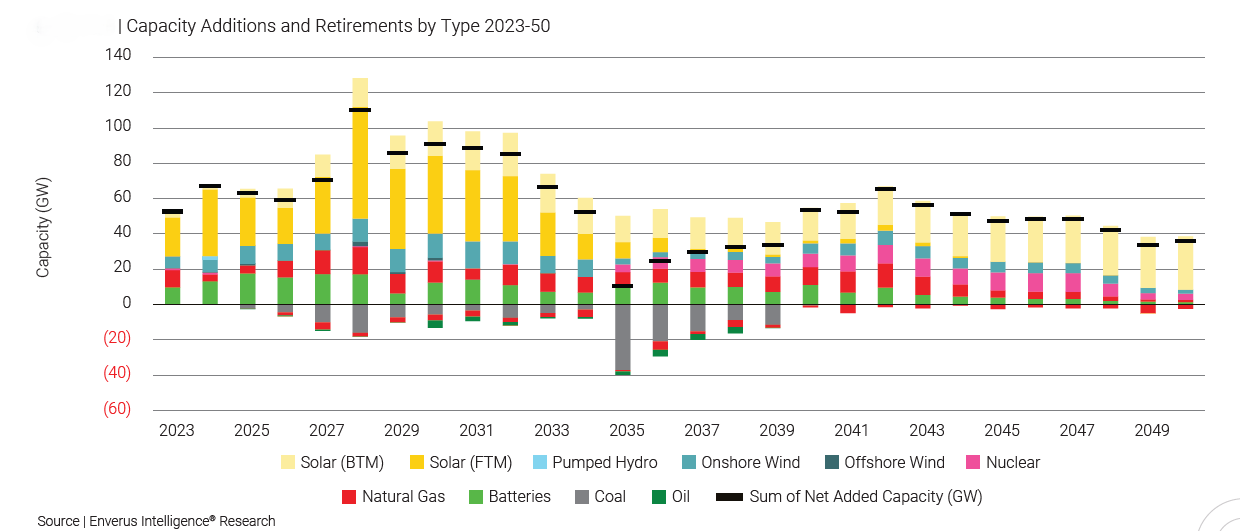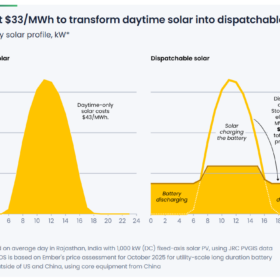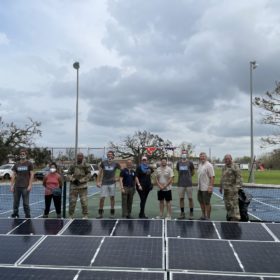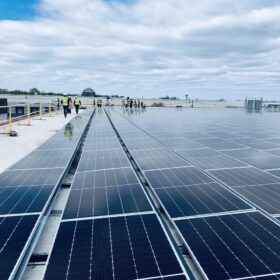Alberta, Canada-based Enverus Intelligence Research (EIR) has released a new report showing that revenues from battery energy storage system (BESS) projects in Texas have plummeted almost 90% over the last two years. In what analysts describe as an “after the gold rush” situation, battery saturation has transformed power markets.
According to Enverus, average annual revenue for BESS in the Electric Reliability Council of Texas (ERCOT) service area have dropped from $149/kWh in 2023 to $17/kWh projected for 2025. This dramatic decrease in profitability has made a significant impact on the ancillary services market, where the share of ancillary services in BESS revenue has fallen from 84% to 48% over the last two years.
“ERCOT’s battery market has reached a critical turning point,” said Juan Arteaga, principal analyst at EIR. “As saturation drives down profitability, operators must evolve beyond ancillary services and embrace sophisticated strategies to remain viable.”
In a sense, the BESS market in ERCOT has been a victim of its own success. Texas has become a top state for solar power growth in the U.S., with much of this development attended by battery storage projects.

According to Solar Energy Industries Association (SEIA), Texas led all states in new solar capacity installed in 2023 and 2024. The EIR report said ERCOT’s installed BESS capacity increased to 11 GW by mid-2025, with batteries providing over 7 GWh during periods of peak demand.
As Arteaga noted, profitability for BESS operators can no longer rely on ancillary services. The EIR report offers the following observations:
- Profitability among operators now depends more on strategic site selection, operational timing, and energy market optimization, rather than fleet size or scale;
- Energy arbitrage strategies have become widespread, but have not offset declining returns, with most major operators posting year-to-date profitability below 2.2%; and
- Future market success will require advanced approaches as ERCOT transitions to Real-Time Co-optimization plus Batteries (RTC+B), making service selection and timing increasingly critical. The RTC+B program, which is due to take effect in December, will enable suitably equipped operators to optimize ancillary services and energy dispatch in real-time to take advantage of market opportunities.
If Texas has experienced huge growth of solar and storage in recent years, this is not guaranteed to continue. SEIA just released an analysis indicating that new federal policies targeting renewable energy are placing a significant majority of planned solar and battery storage capacity in Texas at severe risk. A shakeup in revenues from BESS projects due to market saturation may make new prospective investors and owners uneasy.
This content is protected by copyright and may not be reused. If you want to cooperate with us and would like to reuse some of our content, please contact: editors@pv-magazine.com.









By submitting this form you agree to pv magazine using your data for the purposes of publishing your comment.
Your personal data will only be disclosed or otherwise transmitted to third parties for the purposes of spam filtering or if this is necessary for technical maintenance of the website. Any other transfer to third parties will not take place unless this is justified on the basis of applicable data protection regulations or if pv magazine is legally obliged to do so.
You may revoke this consent at any time with effect for the future, in which case your personal data will be deleted immediately. Otherwise, your data will be deleted if pv magazine has processed your request or the purpose of data storage is fulfilled.
Further information on data privacy can be found in our Data Protection Policy.